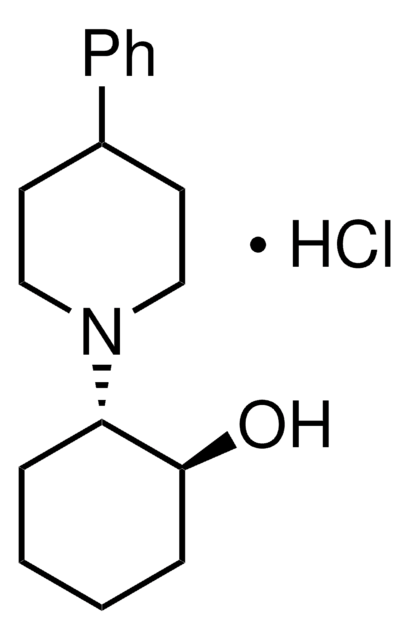H8653
(±)-7-Hydroxy-2-(di-n-propylamino)tetralin hydrobromide
Sinónimos:
(±)-2-Dipropylamino-7-hydroxy-1,2,3,4-tetrahydronaphthalene hydrobromide, (±)-7-Hydroxy-DPAT hydrobromide, (±)-7-OH-DPAT hydrobromide
Seleccione un Tamaño
$127.80
Precio de catálogo$142.00Ahorre 10 %Fecha estimada de envío09 de abril de 2025
Seleccione un Tamaño
About This Item
$127.80
Precio de catálogo$142.00Ahorre 10 %Fecha estimada de envío09 de abril de 2025
Productos recomendados
solubility
H2O: >15 mg/mL
Quality Level
storage temp.
2-8°C
SMILES string
Br.CCCN(CCC)C1CCc2ccc(O)cc2C1
InChI
1S/C16H25NO.BrH/c1-3-9-17(10-4-2)15-7-5-13-6-8-16(18)12-14(13)11-15;/h6,8,12,15,18H,3-5,7,9-11H2,1-2H3;1H
InChI key
ODNDMTWHRYECKX-UHFFFAOYSA-N
Gene Information
human ... DRD3(1814)
Biochem/physiol Actions
signalword
Warning
hcodes
Hazard Classifications
Eye Irrit. 2 - Skin Irrit. 2 - STOT SE 3
target_organs
Respiratory system
Storage Class
11 - Combustible Solids
wgk_germany
WGK 3
flash_point_f
Not applicable
flash_point_c
Not applicable
ppe
dust mask type N95 (US), Eyeshields, Gloves
Elija entre una de las versiones más recientes:
¿Ya tiene este producto?
Encuentre la documentación para los productos que ha comprado recientemente en la Biblioteca de documentos.
Active Filters
Nuestro equipo de científicos tiene experiencia en todas las áreas de investigación: Ciencias de la vida, Ciencia de los materiales, Síntesis química, Cromatografía, Analítica y muchas otras.
Póngase en contacto con el Servicio técnico








